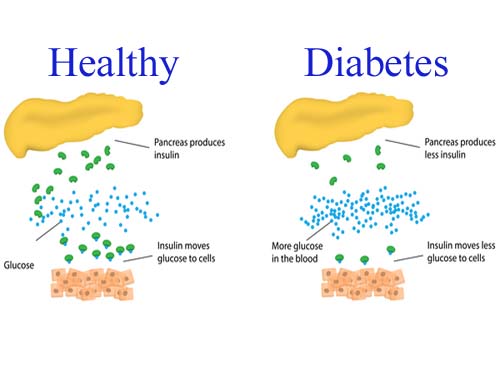Type 2 Diabetes
Type 2 diabetes used to be known as non-insulin dependent diabetes or adult onset diabetes. Those affected do make their own insulin, but it is either not in a sufficient amount to meet their needs or their body has become resistant to its effects. At the time of diagnosis, people with type 2 diabetes will frequently have both high glucose levels and high insulin levels, but they may not have any symptoms. About 90% of diabetes cases in the United States are type 2. It generally occurs later in life, in those who are obese, sedentary, and over 45 years of age. Factors associated with diabetes include: Obesity; Lack of exercise; Family history of diabetes; Pre-diabetes; Ethnicity: African-American, Hispanic-American, Native American, Asian-American, Pacific Islander; Gestational diabetes during pregnancy or baby weighing more than 9 pounds; High blood pressure; High triglycerides, high cholesterol, low HDL; Since Americans are becoming more obese and not getting enough regular exercise, the number of those diagnosed with type 2 diabetes is continuing to rise and it is developing at younger ages.
